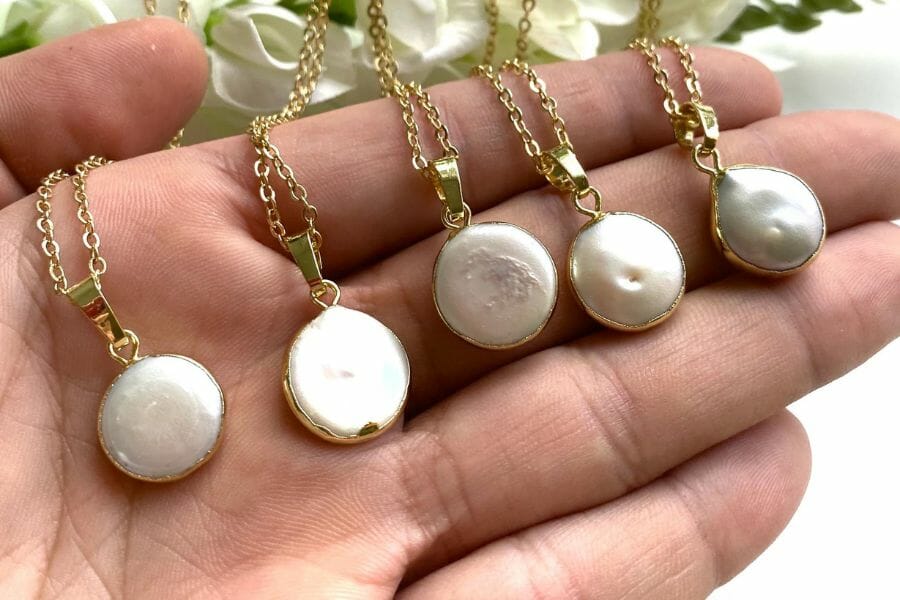Once upon a time, deep under the sea, oysters crafted gems of elegance and prestige—pearls! These luminous treasures have long captured the hearts of collectors, fashionistas, and connoisseurs alike, but what makes them so alluring? In this article, we’ll dive into the fascinating world of pearls, unraveling the mysteries of their value, price, and worth.
Pearls have been an object of desire for centuries, often thought of as the “queen of gems.” But just like beauty is in the eye of the beholder, the value of a pearl can vary greatly depending on a handful of factors.
It’s not all about size, though! Luster, color, shape, and rarity come together to create a genuinely mesmerizing gem that’s worth its weight in gold—or sometimes even more.
But let’s be honest, we’re all human, and sometimes the dollar signs dancing in our eyes can be distracting. In the enchanting world of pearls, prices can skyrocket into the millions, making even the most seasoned collectors’ jaws drop. So, what’s the deal? Why are people shelling out big bucks for these little gems?
What Pearls Are
Pearls are organic gems formed within oysters and other mollusks when an irritant, such as a grain of sand or a parasite, finds its way inside the shell. In response, the mollusk secretes layers of a crystalline substance called nacre around the irritant, eventually forming a lustrous pearl.
The costs of pearls are broken down below per type and color. Given the numerous trace elements found in different varieties of pearls, they aren’t the only types, but they’re typically the most prevalent.
Cultured Pearls
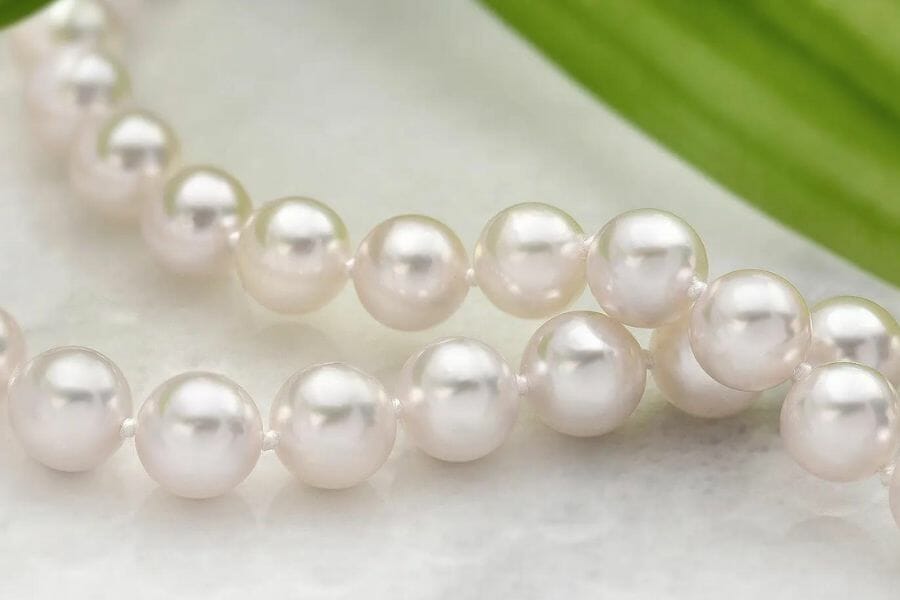
Cultured pearls are created by human intervention, in which a bead or tissue is carefully inserted into a mollusk to initiate the pearl formation process. Like natural pearls, cultured pearls form layers of nacre around the irritant over time.
Although less rare than their natural counterparts, cultured pearls come in stunning colors, shapes, and sizes. Their widespread availability has made them more affordable and accessible for pearl enthusiasts worldwide.
How much is a cultured pearl worth
A cultured pearl’s price usually ranges from $50 – $100,000.
Black Pearls
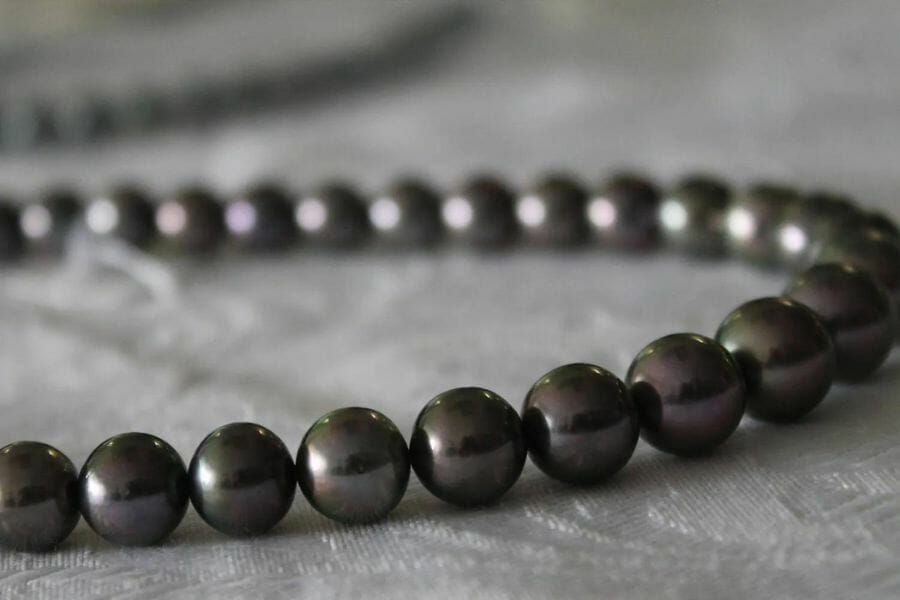
Black pearls, known as Tahitian pearls, originate primarily from the black-lipped oyster around French Polynesia. Their captivating dark hue ranges from silvery-gray to deep black with hints of green, blue, or purple, earning them the nickname “Queen of Pearls.”
Black pearls are highly sought-after for their unique, exotic appearance and rarity compared to traditional white pearls. These alluring gems are a favorite among jewelry enthusiasts and collectors alike.
How much is a black pearl worth
Black pearls are one of the rarest and most unique colored pearls, which usually cost between $250 – $30,000.
Oyster Pearls
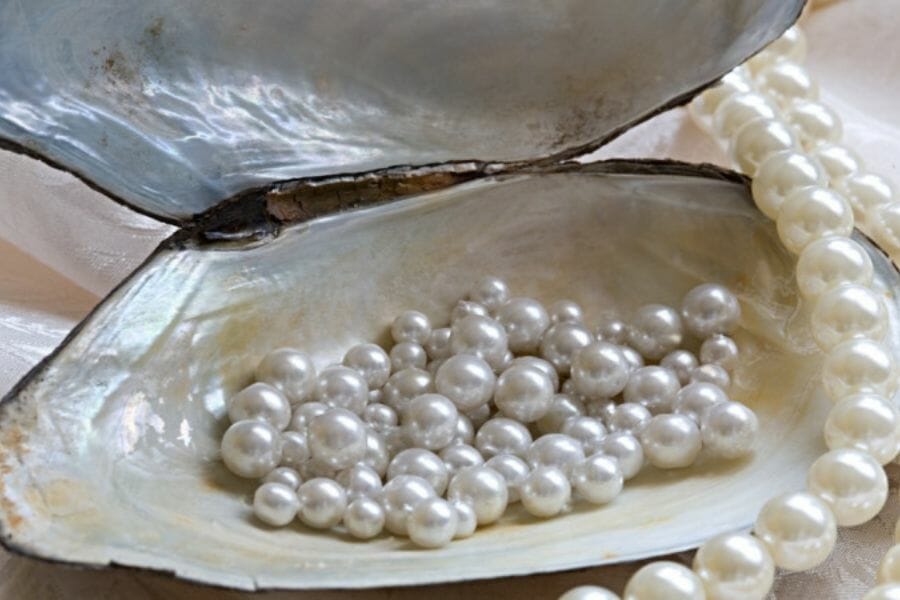
Oyster pearls are natural gems formed inside various species of oysters, and mollusks that dwell in marine habitats. When an irritant, like a tiny grain of sand, infiltrates an oyster’s shell, it triggers the oyster to secrete layers of nacre around the irritant to protect itself.
Over time, these layers create a lustrous, spherical pearl. Oyster pearls come in various colors, shapes, and sizes, and their rarity has made them prized possessions throughout history.
How much is an oyster pearl worth
The pricing range for oyster pearls is from $20 – $5,000.
Freshwater Pearls
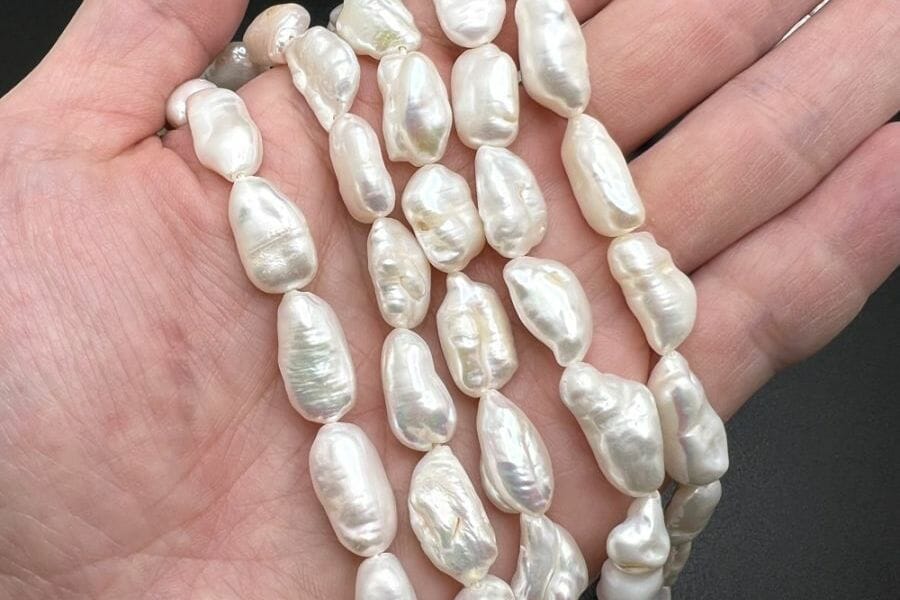
Freshwater pearls are produced by freshwater mussels in lakes, rivers, and ponds. Unlike saltwater pearls, which usually form around a single irritant, freshwater mussels can create multiple pearls simultaneously.
Freshwater pearls come in various shapes, sizes, and colors, including white, cream, pink, and lavender. Although generally more abundant and affordable than saltwater pearls, they still possess an undeniable charm and allure, making them popular in the jewelry industry.
How much is a freshwater pearl worth
Freshwater pearls’ quality can vary substantially. Hence the price range is relatively wide. It usually prices at $20 – $5,000.
Blue Pearls
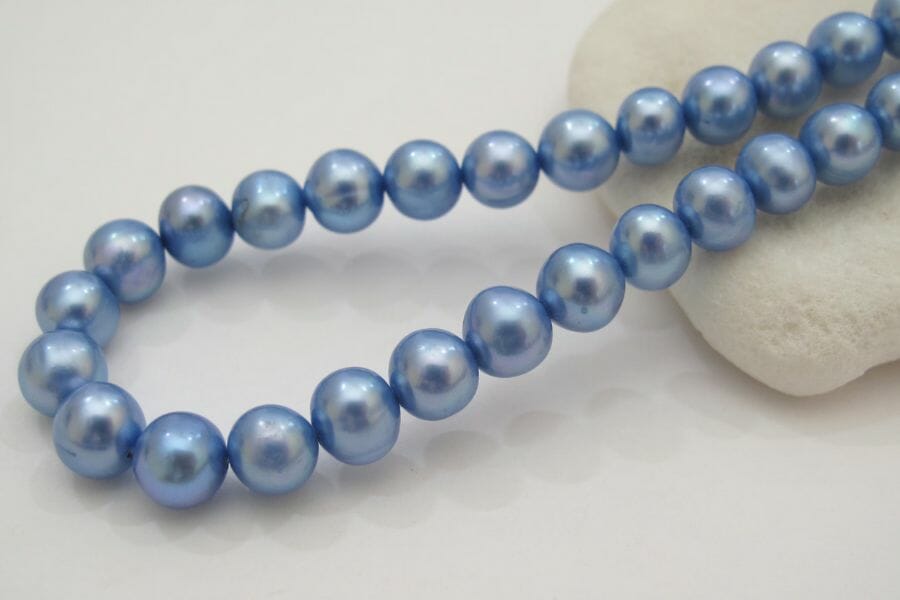
Blue pearls are a rare and captivating variety of pearls, known for their striking blue hues. They can be found in different mollusks, such as the blue-lipped Pinctada maxima oyster and the black-lipped Pinctada margaritifera.
The blue color results from the mollusk’s nacre composition and unique radiance. Ranging from pale sky blue to deep cobalt, blue pearls enchant collectors and jewelry lovers alike with their mesmerizing appearance and extraordinary rarity.
How much is a blue pearl worth
Blue pearls are frequently costly. On average, it frequently sells for $300 – $3,000.
Purple Pearls
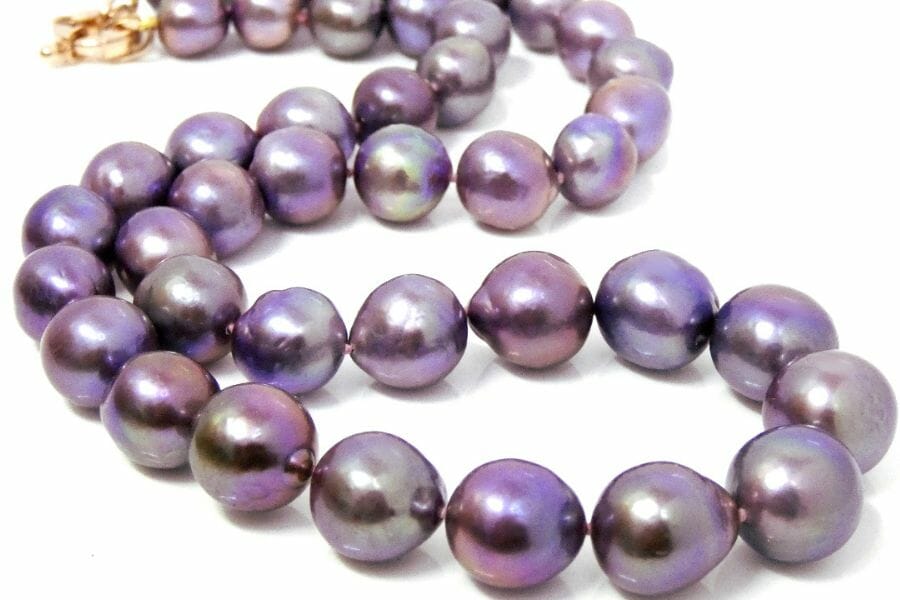
Purple pearls are a rare and enchanting variety celebrated for their exquisite purple hues. Found primarily in freshwater mussels and some saltwater oyster species, these pearls display a range of shades from delicate lavender to deep violet.
The mollusk’s species determine the color, the water’s mineral content, and the nacre’s unique iridescence. Purple pearls, with their exceptional beauty and scarcity, captivate collectors and adorn stunning jewelry pieces.
How much is a purple pearl worth
Purple pearls can be quite expensive and valuable. It usually sells between $600 – $1,600.
Majorica Pearls
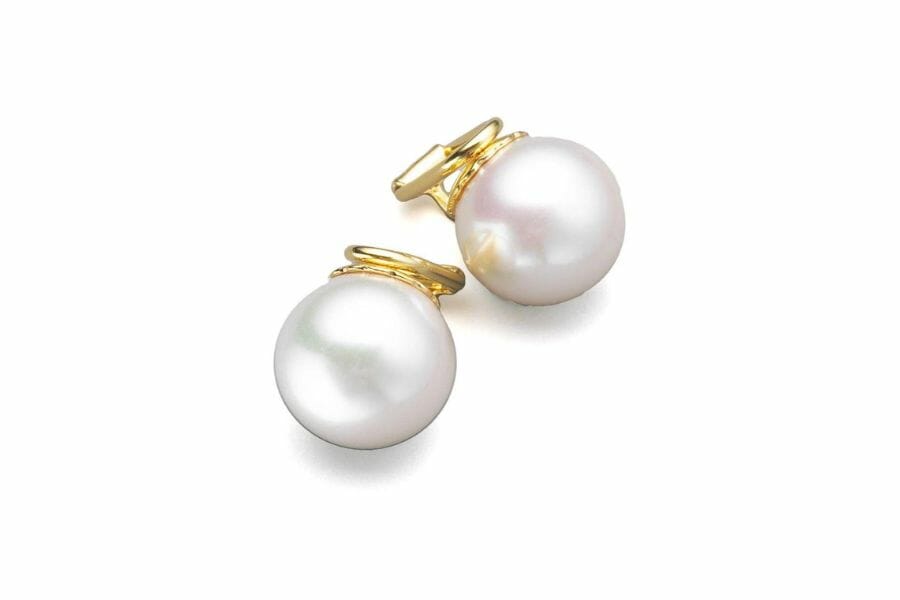
Majorica pearls are high-quality imitation pearls created on the Spanish island of Majorca using a unique manufacturing process. Instead of being formed within a mollusk, Majorica pearls are made by coating a solid glass core with a blend of organic materials, primarily fish scales, to mimic the luster and radiance of genuine pearls.
As an affordable and environmentally friendly alternative, Majorica pearls have gained popularity for their beautiful appearance and ability to withstand wear and tear.
How much is a majorica pearl worth
Majorica pearls usually cost between $150 – $200.
Tips For Buying Pearls
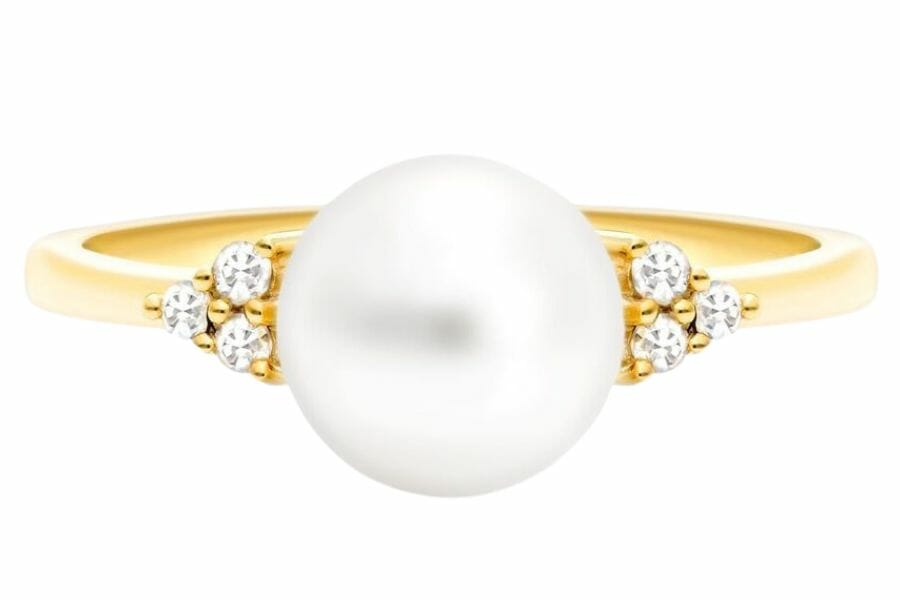
Locating a fabulous pearl piece without emptying your wallet can be like a tricky game sometimes. The price isn’t just based on how shiny the pearl is – there are so many factors at play (don’t worry, we’ll dig into that later!) and some jewelry shops hike up their prices way too much.
All this makes it really hard to tell if you’re snagging a good deal or just getting fooled.
But here’s the secret: The absolute best thing you can do to ensure you’re buying a real, high-quality pearl is to choose a seller who’s trustworthy and been around a long time.
Over time, we’ve found our own “pearl treasure map” – a few special places that never let us down when we’re on the hunt for pearls or top-notch pearl jewelry. We’ve discovered some great big sellers and even a network of smaller sellers who have tons of glowing reviews.
The best of the best usually have these things in common:
- Lots of options in different sizes and styles
- Super high-quality pieces
- Fair and responsible ways to get their pearls
- Amazing reviews and satisfied customers
- Prices that won’t break the bank
So, keep those points in mind, and check out a couple of these below if you’re looking to add to your collection:
Blue Nile for high-quality jewelry – See their pearl selection HERE
Blue Nile is one of the largest jewelry dealers in the world and we’ve consistently been able to find high-quality pieces from them at reasonable prices. Our team has purchased several pieces from them and has been really happy with the quality.
If you want the biggest selection and the best prices (they do so much business they can have smaller markups) you should try them out first. You can check out their pearl inventory here if you don’t believe us!
Honorable mention – James Allen
If you don’t find exactly what you need on Blue Nile you should also check out James Allen’s pearl selections. They are another favorite of ours with some great pieces. We just like Blue Nile a bit more and have bought more from them in the past.
Etsy for loose pearls or more eclectic pieces (see here)
We’ve really grown to love Etsy and the wide variety of loose and set pearls available there. It’s a fantastic marketplace of small and large sellers where you can find just about any type of pearl you’re looking for.
We’ve found some great raw pearls and more unique pearl pieces here. You will have to spend a lot more time searching to find what you want though.
The other downside is that the quality is going to be a lot less consistent than with Blue Nile. You’ll be dealing with a lot of smaller sellers and some don’t have the same level of expertise. You can usually avoid the bad ones by looking at their reviews though!
The selection of pearls on Etsy is unmatched!
Why Pearls Are So Expensive
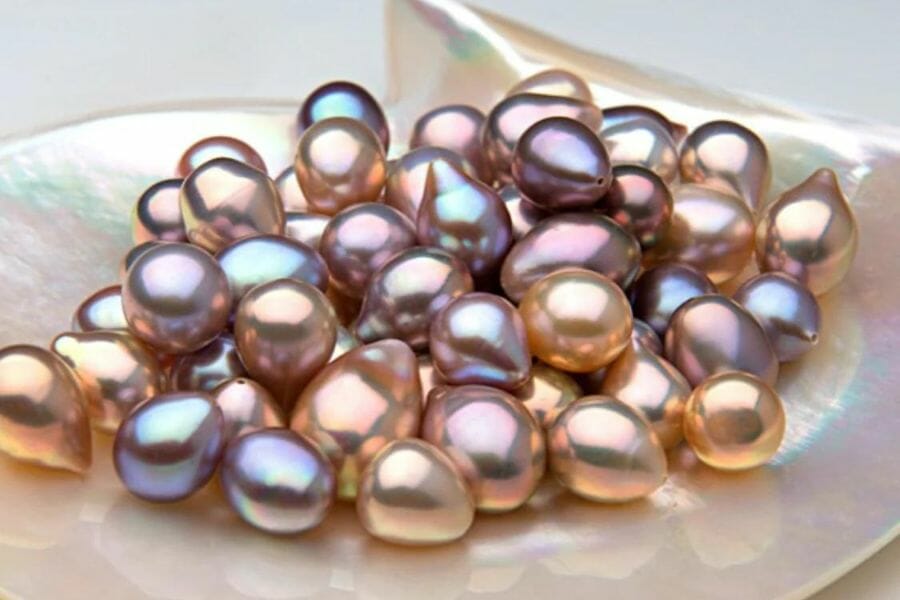
Pearls have long been held in high esteem, their allure captivating the hearts and minds of people for centuries. The reasons behind the immense value placed on these lustrous gems are manifold, with their rarity, beauty, and the detailed process of their creation being key factors.
Pearls are unique among gemstones because of their organic origin. While most precious stones are mined from the earth, pearls are formed within living creatures – oysters and other mollusks – adding an element of mystique and wonder to their charm. The natural process by which a pearl form is slow and delicate, often taking years to produce a single, perfectly formed gem. This rarity makes pearls all the more precious.
The remarkable beauty of pearls also contributes to their value. They possess a natural luster and iridescence unmatched by other gemstones, making them the epitome of elegance and refinement. Pearls come in a breathtaking array of colors, shapes, and sizes, offering a gorgeous palette for jewelry makers and collectors alike.
Historically, pearls have been symbols of wealth, power, and status. Kings, queens, and emperors adorned themselves with these gems, reinforcing their allure and desirability. Today, pearls are still associated with luxury and sophistication, making them a coveted accessory for special occasions and timeless fashion statements.
How To Determine The Value Of Pearls
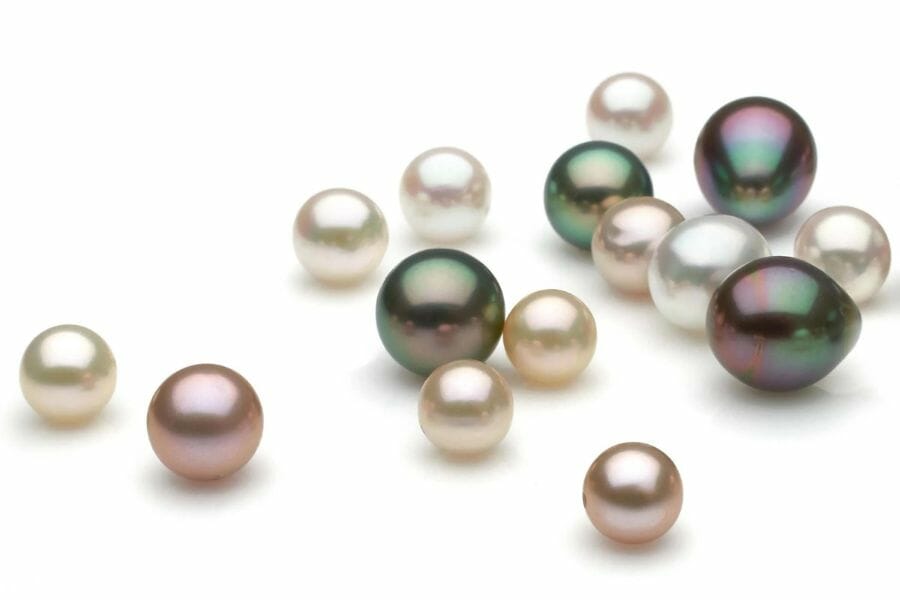
A few key elements often determine any particular pearl’s price:
Size
Larger pearls are generally more valuable than smaller ones, taking longer to form within the mollusk.
Shape
Perfectly round pearls are the rarest and most sought-after. Other shapes like teardrop, oval, and elaborate can also be valuable, depending on the demand and the pearl’s overall quality.
Luster
The luster of a pearl refers to its surface shine and the way it reflects light. High-quality pearls have a deep, mirror-like luster, while lower-quality pearls may appear dull or chalky.
Surface quality
The fewer blemishes or imperfections a pearl has, the higher its value. Pearls with the smooth, clean surfaces are more desirable than those with visible spots, wrinkles, or pits.
Color
Pearls come in various colors, and the value often depends on the rarity and demand for a particular color. Classic white pearls are usually famous, but unique colors like golden, black, or deep blue can increase prices.
Nacre thickness
Nacre is the substance that forms the pearl within the mollusk. Thicker layers of nacre result in more durable and lustrous pearls, increasing their value.
Type of pearl
The pearl’s type (natural, cultured, saltwater, or freshwater) also influences its price. Natural pearls are the rarest and most expensive, while cultured pearls are more affordable and widely available.
Origin
The geographic location where a pearl was harvested can impact its price. Some regions, like Tahiti or the South Sea, are famous for producing rare or high-quality pearls, which can command higher prices.
Matching
In the case of pearl jewelry, like a necklace or a pair of earrings, the quality of the match between the pearls also plays a role in determining the price. Well-matched pearls in size, shape, color, and luster are more valuable than poorly matched sets.
Pearl Price By Type
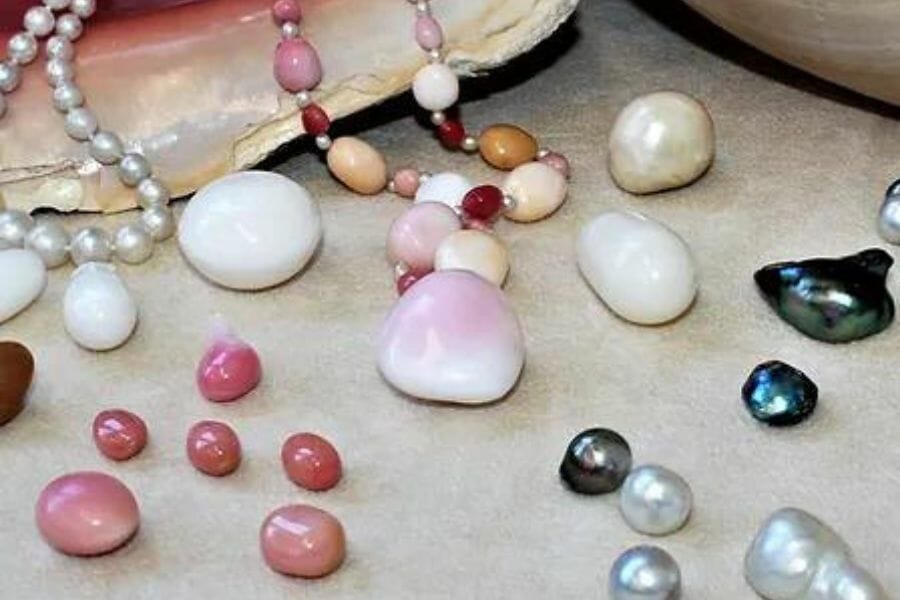
Understanding the factors is necessary to determine a pearl’s worth and price. The most popular types and colors of pearls and their recent prices are listed below.
Pearl values by color/type
| Color/Type | Location | Price (Per Carat) |
| Cultured Pearls | Any | $50 – $100,000 |
| Black Pearls | Any | $250 – $30,000 |
| Oyster Pearls | Any | $20 – $5,000 |
| Freshwater Pearls | Any | $20 – $5,000 |
| Blue Pearls | Any | $300 – $3,000 |
| Purple Pearls | Any | $600 – $1,600 |
| Majorica Pearls | Any | $150 – $200 |
There is a significant range in the value and price of various pearl colors and types. Let’s find out how much other units cost in pearls.
Pearl pricing by unit of measurement
| Measurement | Price |
| A carat of pearl | $50 – $100,000 |
| A gram of pearl | $250 – $500,000 |
| An ounce of pearl | $7,090 – $14,174,800 |
| A kilogram of pearl | $250,000 – $500,000,000 |
| A pound of pearl | $113,400 – $226,800,000 |
| A ton of pearl | $226,796,250 – $253,592,500,000 |
The Most Expensive Pearl
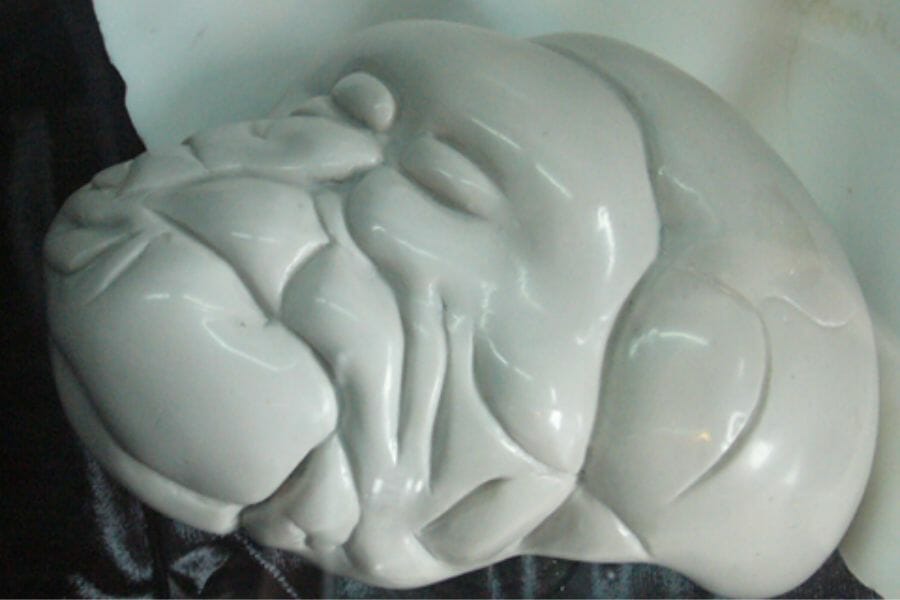
The most expensive pearl ever sold was the “Pearl of Allah” (also known as the “Pearl of Lao Tzu”). It is not a gem-quality pearl, but it is the largest known pearl in the world, weighing around 14.1 pounds (6.4 kg) and measuring about 9.5 inches (24 cm) long.
The pearl was reportedly valued at $100 million in 2015. However, prices and valuations can change over time, and more expensive pearls may be sold.
How To Get An Appraisal On Your Pearl
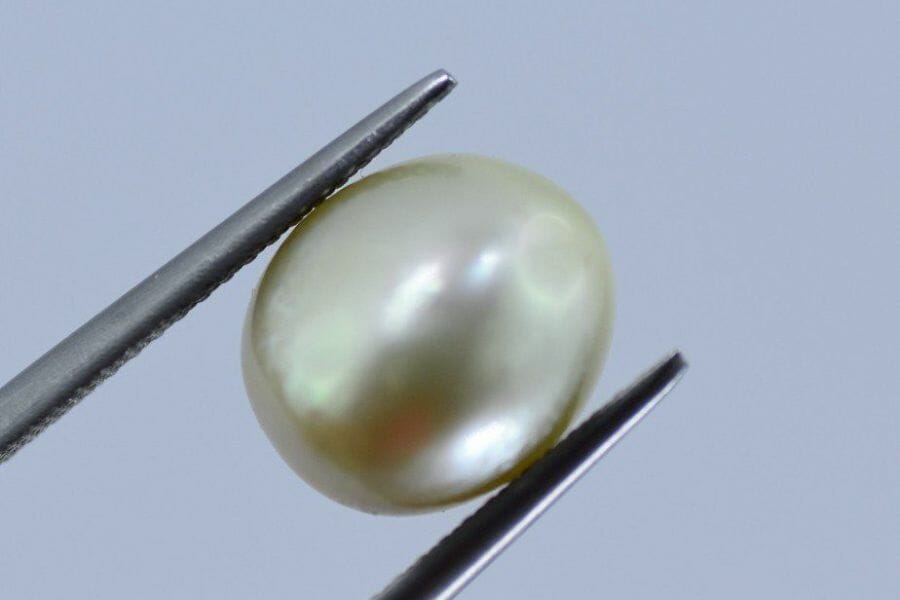
Search for a qualified and experienced gemologist or jewelry appraiser specializing in pearls. You can ask for recommendations from friends or family, consult your local jeweler, or search online for accredited appraisers affiliated with professional organizations such as the American Gem Society (AGS) or the Gemological Institute of America (GIA).
Ensure the appraiser you choose has proper credentials, such as a Graduate Gemologist (GG) diploma from the GIA or a Certified Gemologist (CG) title from the AGS. An appraiser with a strong pearl background will be better equipped to assess your pearls’ value accurately.
Clean your pearls gently using a soft, damp cloth to remove dirt or residue. If you have any documentation related to the pearls, such as receipts, previous appraisals, or certificates, bring them with you to the appointment. The appraiser will examine your pearls, considering size, shape, color, luster, surface quality, nacre thickness, and origin. They may use specialized tools like microscopes, calipers, or refractometers to assess the pearls accurately.
Remember that market values can change over time, so it’s a good idea to appraise your pearls periodically to ensure an accurate and up-to-date valuation.

